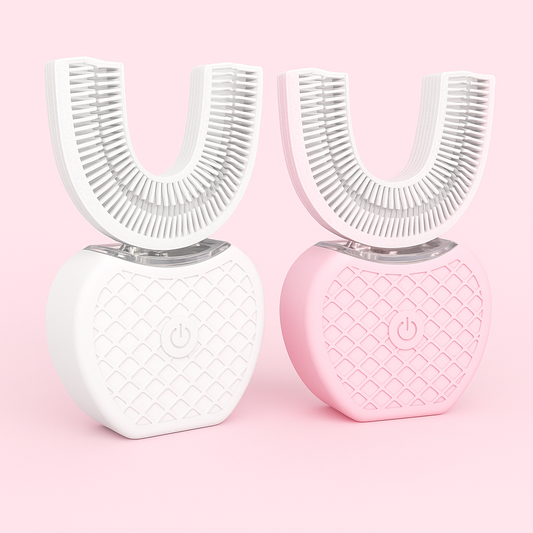Introduction
In 2025 the market for fluoride-free whitening toothpaste continues to expand as more consumers seek alternatives that blend cosmetic whitening with gentler, microbiome-friendly oral care. If you're searching for a good whitening toothpaste that avoids fluoride but still delivers visible results, this comprehensive blueprint explains the science, the ingredients to prioritize (notably xylitol and niacinamide), how to evaluate products, and a practical daily routine to keep your teeth healthy and brighter.
Why consider a toothpaste without fluoride?
Fluoride remains one of the most effective agents for preventing tooth decay. Still, some people prefer a fluoride-free approach for personal, medical, or philosophical reasons. Typical reasons include:
- Personal preference or concern about fluoride exposure.
- Desire for more natural or alternative oral care formulations.
- Interest in ingredients that support the oral microbiome rather than relying solely on fluoride.
Important: if you have a history of cavities or are at high caries risk, discuss changes with your dentist before stopping fluoride. A well-informed choice balances cosmetic goals (whitening) with long-term cavity prevention.
Xylitol and niacinamide: what they do and why they matter
Two ingredients commonly highlighted in modern fluoride-free toothpastes are xylitol and niacinamide (vitamin B3). They target different aspects of oral health and, when combined with safe whitening approaches, can give a meaningful boost to both appearance and protection.
Xylitol: more than a sweetener
- Mechanism: Xylitol is a sugar alcohol that certain oral bacteria cannot metabolize. Regular exposure can reduce levels of Streptococcus mutans and other cavity-associated bacteria by interfering with their ability to adhere to tooth surfaces.
- Benefits in toothpaste: Incorporating xylitol into a toothpaste supports a less cariogenic oral environment, helps reduce plaque formation, and complements whitening by limiting the bacterial film that traps stains.
- Safety notes: Xylitol is safe for humans in typical oral-care concentrations but is highly toxic to dogs. Keep toothpaste away from pets.
Niacinamide: emerging oral-care ally
- Role: Niacinamide (vitamin B3) is known for skin barrier support in dermatology. In oral care, it is being explored for mucosal health, calming irritation, and reducing sensitivity.
- Why it pairs well with whitening: Whitening products can increase transient sensitivity or gum irritation for some users. Niacinamide’s supportive effects may improve comfort and user compliance.
- Evidence: Research is still emerging, but preliminary studies and ingredient-safety profiles make niacinamide an attractive additive for formulas aimed at people with sensitive gums or those seeking gentler whitening.
How whitening actually works in non-fluoride toothpastes
Whitening without peroxide or high concentrations of chemicals relies on approaches that either remove surface stains or change the way light interacts with the tooth surface. Common mechanisms include:
- Mechanical abrasion: Mild, controlled abrasives (hydrated silica, calcium carbonate) polish away extrinsic stains caused by coffee, tea, tobacco, and pigmented foods.
- Chemical cleaners and chelators: Ingredients that dissolve or lift stain molecules without bleaching agents.
- Enzymes: Natural enzymes (like papain or bromelain) can break down the organic film that holds stains.
- Remineralizing agents: Hydroxyapatite or calcium-phosphate compounds can fill microscopic enamel irregularities and improve light reflection, producing a visually whiter effect.
Understanding abrasivity and enamel safety (RDA explained)
Relative Dentin Abrasivity (RDA) measures how abrasive a toothpaste is. Abrasivity matters because overly abrasive formulas can wear enamel and expose dentin, which makes teeth look darker and increases sensitivity.
- Many manufacturers do not publish RDA; when available, seek values and choose conservative levels for daily whitening use.
- General guidance: RDA below 250 is often cited as acceptable; however, for daily use most experts recommend lower RDA values (many consumers aim for under 100) to reduce long-term wear.
- If you have thin enamel or tooth sensitivity, favor low-abrasivity formulas and consult your dentist.
Other useful ingredients to look for
- Hydrated silica and calcium carbonate: Popular mild abrasives for stain removal.
- Sodium bicarbonate (baking soda): Gentle, effective for neutralizing acids and removing surface stains when used at safe concentrations.
- Hydroxyapatite: A biomimetic mineral that can help remineralize enamel and improve visual brightness as an alternative to fluoride.
- Enzymes (papain, bromelain): Support breakdown of organic stain matrix.
- Natural oils and flavorings: Provide pleasant taste without alcohol, which can dry oral tissues.
- Non-abrasive polishing agents: Polymers and silicates engineered to polish gently without aggressive wear.
Label-reading: practical tips
When evaluating a toothpaste that claims to whiten without fluoride, do the following:
- Look for "toothpaste without fluoride" or "fluoride toothpaste free" if fluoride avoidance is your objective.
- Scan the ingredient list for key words: "xylitol", "niacinamide", "hydroxyapatite", "hydrated silica", "baking soda", or "enzyme".
- Check for clinical claims and supporting data. Phrases like "clinically tested" should ideally be backed by summaries or links to studies.
- Note any allergy or safety warnings. If pregnant, nursing, or immunocompromised, consult your clinician.
- Assess flavor and intended use: daily whitening formulas differ from weekly polishing or professional-grade products.
How to choose between product types
There are several categories of fluoride-free whitening toothpastes. Choose based on your priorities:
- Low-abrasion, microbiome-friendly formulas: Prioritize xylitol and hydroxyapatite for long-term oral health and gentle whitening.
- Polishing-focused pastes: Contain stronger abrasives for faster surface stain removal—use sparingly or under guidance.
- Enzyme-based natural formulas: Offer gentle stain removal using biological action rather than mechanical grit.
- Multi-active formulations: Combine xylitol, niacinamide, and mild abrasives to balance whitening and comfort.
Routine and technique for best results
Even the best toothpaste performs poorly with poor technique. Follow this routine for optimized whitening and oral health:
- Brush twice daily for two minutes each time with a soft-bristle brush and a pea-sized amount of toothpaste.
- Use gentle, circular motions—avoid aggressive horizontal scrubbing that damages enamel and gums.
- Complement brushing with daily flossing and tongue cleaning to reduce stain-holding biofilm.
- Rinse or drink water after consuming staining beverages like coffee, tea, red wine, or sodas; consider using a straw when possible.
- Schedule regular professional cleanings—removal of hardened tartar and intrinsic discoloration requires a hygienist’s tools.
Special considerations by group
- Children: Use age-appropriate products. Many fluoride-free toothpastes are formulated for kids, but consult your pediatric dentist since fluoride plays an important role in childhood cavity prevention.
- People with sensitive teeth: Look for niacinamide and low RDA; avoid whitening pastes with high abrasivity.
- Orthodontic patients: Plaque control is vital around brackets—choose gentle, anti-biofilm formulas and ask your orthodontist for recommendations.
- Pregnant or nursing: Check with your clinician before switching formulations. Many topical ingredients are safe, but professional guidance is wise.
Realistic whitening expectations
Fluoride-free whitening toothpastes mainly remove extrinsic (surface) stains. They can significantly improve apparent whiteness over weeks of consistent use, but they:
- Are less likely to change intrinsic tooth color (deeper discoloration) compared to professional bleaching.
- Work best when combined with stain-prevention habits and occasional professional polishing.
- May require several weeks to show consistent, noticeable results.
Practical buying guide — step-by-step
- Decide on priorities: Do you prioritize whitening speed, enamel safety, or microbiome support?
- Search labels for "toothpaste with xylitol", "niacinamide toothpaste", or "hydroxyapatite" depending on your goals.
- Check customer reviews for real-world feedback on whitening and sensitivity.
- Confirm whether the product is described as a "toothpaste that whitens teeth" or marketed as "best toothpaste whitening teeth"—then verify claims with ingredient analysis.
- Conduct a 2–4 week trial period and monitor for sensitivity or gum changes. If adverse effects occur, discontinue and consult your dentist.
Frequently asked questions (FAQ)
- Will a fluoride-free whitening toothpaste prevent cavities? It depends. Ingredients like xylitol and hydroxyapatite can support cavity prevention, but they do not replace fluoride’s proven anti-caries effects for those at elevated risk. Discuss options with your dentist.
- Are these pastes safe if swallowed? Most are safe in small amounts typical for brushing, but swallowing large amounts regularly is not recommended. Keep products away from children and pets (especially dogs, since xylitol is toxic to them).
- How long until I see whitening results? Many users notice gradual improvement in 2–6 weeks, depending on initial staining and product choice.
- Can I alternate fluoride and fluoride-free toothpastes? Some people use fluoride toothpaste morning and fluoride-free in the evening, or alternate weekly. If you are caries-prone, your dentist may advise continued fluoride use.
Common pitfalls and how to avoid them
- Buying high-abrasivity products for faster results can harm enamel—prioritize safety over speed.
- Relying solely on toothpaste for dramatic whitening; professional whitening or veneers may be needed for intrinsic stains.
- Overlooking the rest of the routine—diet, flossing, and professional care matter more than incremental formulation differences.
How to evaluate marketing claims
Many brands use phrases like "best toothpaste for whiter teeth" or "treatment for teeth". To separate marketing from substance:
- Look for transparent ingredient lists and evidence of testing.
- Prefer brands that explain how and why their active ingredients work (e.g., mechanism of xylitol or hydroxyapatite).
- Be wary of unspecified "clinical-grade" claims with no documentation.
DIY and complementary practices
Beyond toothpaste, small changes help maintain whiteness:
- Limit staining foods and drinks; rinse after consumption.
- Use a straw for acidic or strongly pigmented beverages.
- Consider periodic professional polishing or whitening under dental supervision for stubborn stains.
SEO-minded keyword roundup
To help you search and compare online, these keywords are commonly used by consumers looking for fluoride-free whitening solutions: good whitening toothpaste, toothpaste without fluoride, toothpaste with xylitol, health teeth, whitening toothpaste, treatment for teeth, niacinamide toothpaste, toothpaste whitening best, toothpaste that whitens teeth, best toothpaste whitening teeth, best toothpaste for whiter teeth, fluoride toothpaste free, toothpaste for whitening teeth. Use these phrases when searching product pages and reviews to locate options aligned with this blueprint.
Where to find well-formulated fluoride-free whitening toothpastes
Several specialized brands and niche oral-care companies focus on fluoride-free, xylitol-containing, and niacinamide-enriched options. For an easy starting point, search websites that curate natural and evidence-conscious oral-care products. If you prefer a direct shopping option, explore collections that explicitly promote whitening and oral health benefits.
Sponsored product suggestion and how to buy
If you want to explore curated fluoride-free whitening products that emphasize xylitol, niacinamide, and enamel-friendly polishing agents, consider browsing collections on Havana Body. Their product pages often use search-friendly terms such as 'good whitening toothpaste' and 'toothpaste with xylitol' to help you find formulas that match the blueprint above.
Putting the blueprint into action
Follow these steps to apply the guide quickly:
- Decide whether you will avoid fluoride permanently or try a hybrid approach (alternating products).
- Choose a toothpaste that lists xylitol and/or niacinamide, low-to-moderate abrasives, and optional hydroxyapatite for remineralization.
- Use proper brushing technique twice daily, floss, and schedule regular cleanings.
- Track whitening results for 4–8 weeks and reassess if sensitivity or insufficient whitening occurs.
Final thoughts and invitation
Choosing the best fluoride-free whitening toothpaste is a balance of realistic expectations, careful label reading, and consistent oral-care habits. Prioritizing xylitol and niacinamide can deliver both cosmetic and comfort advantages while avoiding fluoride. Always consult your dental professional if you have elevated caries risk or significant dental concerns.
For those ready to shop, explore specialized options and discover fluoride-free, xylitol-powered, niacinamide-enriched choices at Havana Body. Search for 'toothpaste without fluoride', 'niacinamide toothpaste', or 'best toothpaste whitening teeth' on their site. Ready to try a carefully formulated option? Visit Havana Body now to browse products and purchase the toothpaste that fits your whitening and oral-health goals.
References & further reading
This article summarizes commonly accepted principles of oral care and whitening strategies as of 2025. For the latest clinical guidance and personalized recommendations, consult your dentist and peer-reviewed dental literature.

